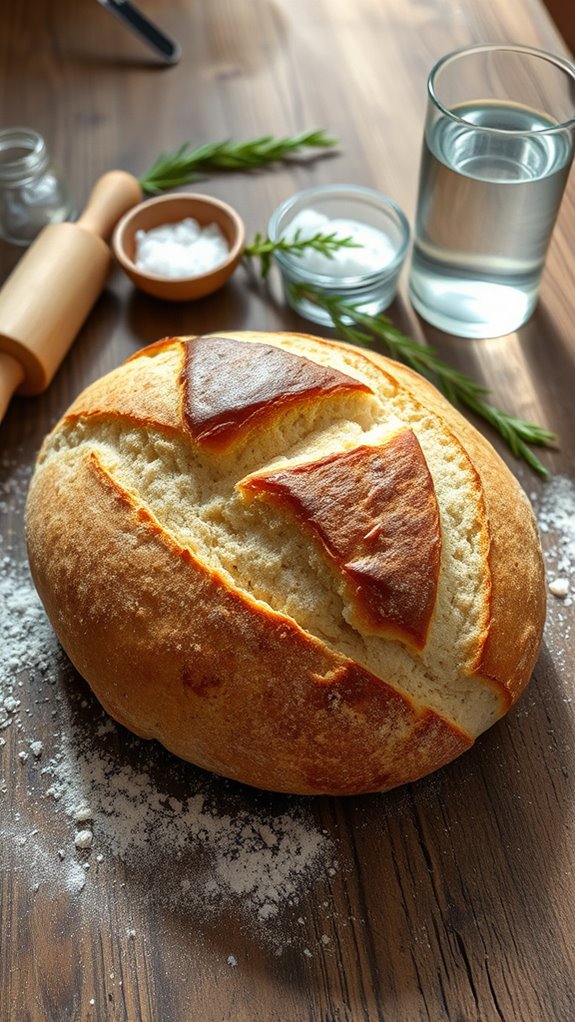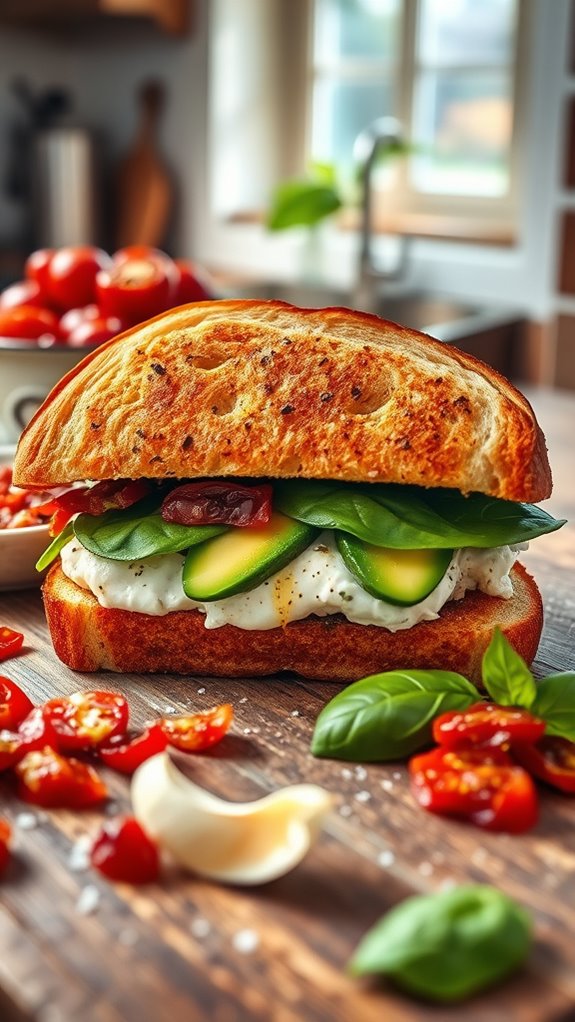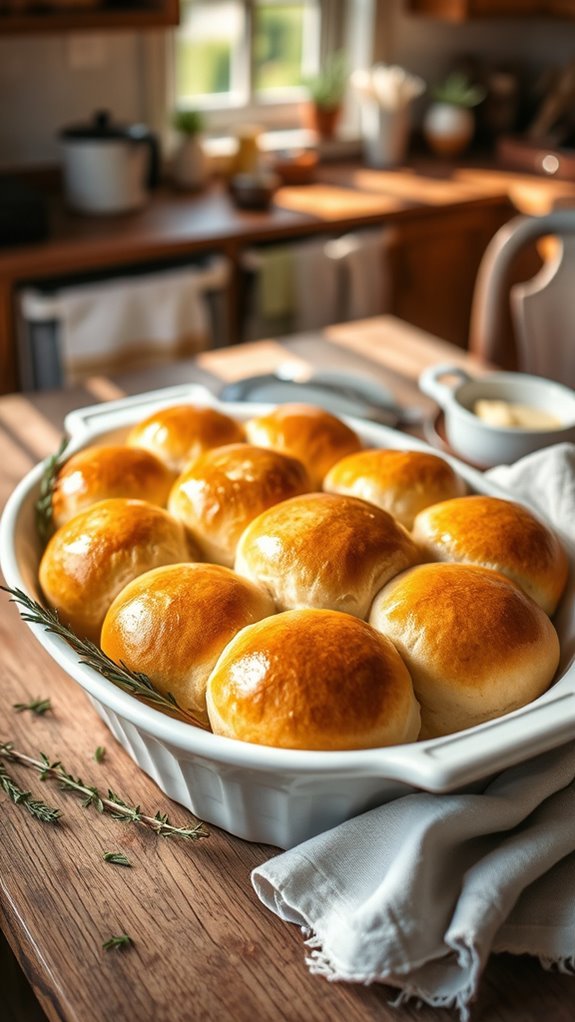Amybakesbread Sourdough
In the domain of baking, sourdough stands like an ancient tree, its roots deep in history. As you begin your journey with Amybakesbread Sourdough, you'll discover the intricate dance of fermentation that gives each loaf its character. From selecting the finest ingredients to mastering the art of the starter, every step unfolds a new layer of flavor and texture. What secrets might you uncover as you explore this timeless craft?
History
When you think about sourdough, it's hard to ignore its rich history that stretches back thousands of years. Its ancient origins trace back to ancient Egypt, where it's believed bakers discovered the magic of naturally fermented dough.
You might be surprised to learn that this simple method not only produced bread but also birthed a communal tradition around baking that shaped cultures. Each loaf carries stories of shared meals and celebration, showcasing its cultural significance.
As people passed down their unique starters through generations, sourdough became a symbol of resilience and adaptability.
Today, when you savor a slice, you're not just tasting bread; you're enjoying a connection to humanity's past, where each bite whispers tales of time-honored tradition.
Recipe

Sourdough bread is a beloved staple that brings a touch of rustic charm to any meal. With its crispy crust and soft, tangy interior, it's no wonder that baking your own sourdough has become a popular and fulfilling endeavor. Whether you're a seasoned baker or a novice looking to explore the art of fermentation, this recipe will guide you through creating your very own sourdough bread from scratch. You'll embrace the slow rise, the delightful aroma of the dough as it develops, and the rewarding moment when you finally break into a freshly baked loaf.
The beauty of sourdough lies in its simplicity, requiring just a handful of ingredients and a little bit of patience. This process begins with a sourdough starter, which can be made at home from just flour and water. Allowing it to ferment and develop its unique flavors is vital for the creation of your bread. Follow this recipe to witness the transformation of simple ingredients into a crusty, flavorful bread that will impress your family and friends.
Ingredients:
- 1 cup (240g) active sourdough starter
- 1 1/2 cups (360ml) water, at room temperature
- 4 cups (480g) all-purpose flour
- 1 1/2 teaspoons salt
In a large mixing bowl, combine the active sourdough starter and warm water, stirring until well mixed. Gradually add in the flour and salt, mixing until a shaggy dough forms. Knead the dough on a floured surface for about 10 minutes until it becomes smooth and elastic.
Place the dough in a lightly greased bowl, cover it with a damp towel, and let it rise at room temperature for 4-6 hours or until it has doubled in size. Once risen, gently deflate the dough and shape it into a round loaf. Transfer it to a floured proofing basket, cover it again, and let it rise for another 2 hours.
Preheat your oven to 450°F (230°C) about 30 minutes before baking. When ready, transfer the dough to a baking sheet or Dutch oven, score the top with a sharp knife, and bake for 30-35 minutes until golden brown and crusty.
For best results, be patient with the fermentation process—sourdough thrives on time! Confirm your starter is strong and bubbly before you begin, as this will greatly impact the rise and flavor of your bread.
Additionally, experiment with different types of flour, such as whole wheat or rye, to find the flavor and texture that best suits your taste. Finally, if you prefer a softer crust, you can cover the loaf with foil during the last 10-15 minutes of baking.
Enjoy your homemade sourdough bread fresh, toasted with butter, or as the base for a delicious sandwich!
Nutritional Guide
If you're curious about the nutritional benefits of homemade sourdough bread, you'll find it's not just delicious but also offers a range of health advantages.
Sourdough typically contains just three main ingredients: flour, water, and salt. This simple ingredient breakdown means fewer additives and preservatives compared to store-bought bread.
One significant health benefit is its lower glycemic index, making it easier on your blood sugar levels. The fermentation process enhances nutrient absorption, helping your body utilize vitamins and minerals more effectively.
Additionally, sourdough is rich in probiotics, which promote gut health and support digestion. Plus, it's packed with fiber, which keeps you feeling full longer.
Final Thought
As you embrace the art of making sourdough, you'll find that the journey is just as rewarding as the final product. Every loaf tells a story, showcasing the thoughtful baking techniques you've honed.
From kneading to shaping, each step enhances your skills, allowing you to develop your unique baking style. Experimenting with different flavors makes the experience even more exciting—try adding herbs, spices, or even fruits to create delicious flavor variations that dance on your palate.
With every bake, you learn, adapt, and grow, turning what once seemed complicated into a joyous ritual. So, roll up your sleeves, and plunge into this delectable adventure.
Your kitchen will become a canvas, and those splendid sourdough loaves will be your masterpiece.






